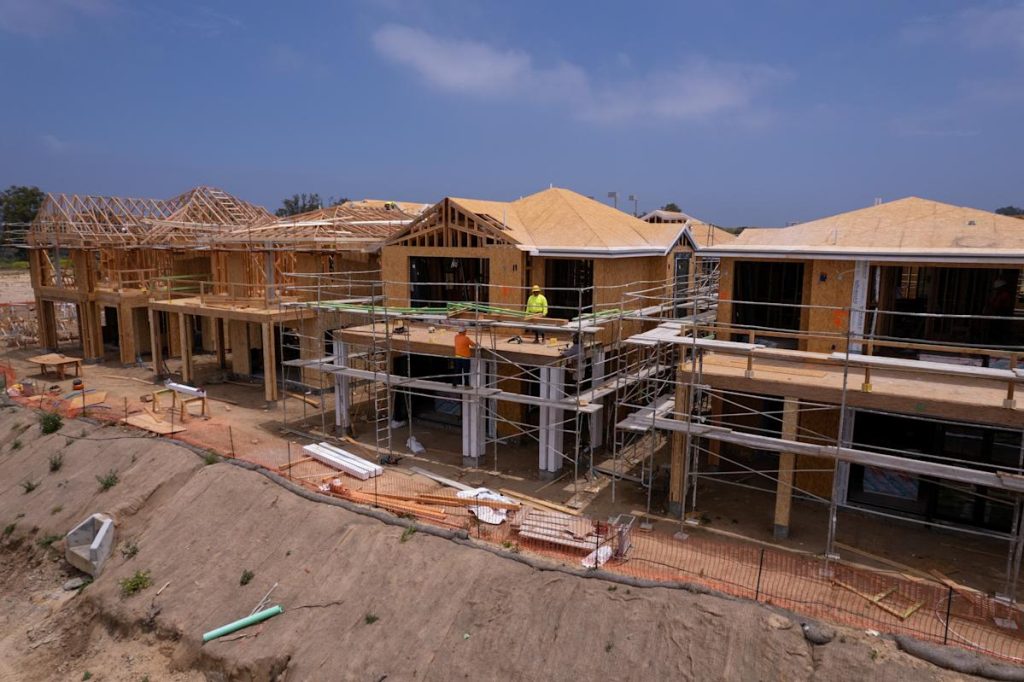
Homebuilders and the broader new construction industry got a bit of a reprieve from President Trump’s sweeping new tariff agenda, which exempted several key building materials from further tariffs. But the levies are still likely to raise construction costs and further stress the precarious US housing market.
On Wednesday, Trump unveiled broad, varied tariffs on goods imported from US trading partners. Chinese imports will be subject to a new 34% levy (in addition to an existing 20% rate), while goods from the European Union will be taxed at 20%. Notably absent from the new list were Canada and Mexico, two major trading partners homebuilders rely on for lumber and drywall components.
Other commonly used building materials, like aluminum and steel, are exempt from the latest tariffs after being hit with an earlier 25% duty. There’s also a carveout for lumber and copper imports.
To be sure, builders and economists expect construction costs will still rise, although they say it’s too soon to tell by how much. Builders rely on imports from a variety of countries — many appliances are imported from China, for example. One previous builder survey found that earlier rounds of tariffs alone would add about $9,200 to the average home’s construction costs.
“There’s just a lot of uncertainty right now,” said Robert Dietz, chief economist for the National Association of Home Builders. “Reciprocal tariffs are going to apply to building materials from outside Canada and Mexico, and we’ve just got a lot to learn going forward.”
Stock investors are bearish on what the tariffs might mean for the future. One major exchange-traded fund that tracks builders, the SPDR S&P Homebuilders ETF (XHB), was down 5.6% midday Thursday, outpacing the S&P 500’s (^GSPC) 3.7% drop.
Read more: Homebuilder stocks struggle as Trump’s tariffs threaten housing recovery
Beyond materials costs, tariffs are likely to impact the housing market in several indirect but important ways. As financial markets sold off on Thursday morning, traders rushed to buy Treasurys, sending yields sharply lower. Mortgage rates closely track 10-year Treasury yields, which are expected to become more volatile in the coming weeks.
Tariffs have wide-reaching implications for economic growth and consumer spending. Mortgage rates were already beginning to fall on Thursday, which is usually a boon for potential buyers. But when rates drop due to recession concerns, nervous buyers may opt to stay on the sidelines.
Read more: What Trump’s tariffs mean for the economy and your wallet
